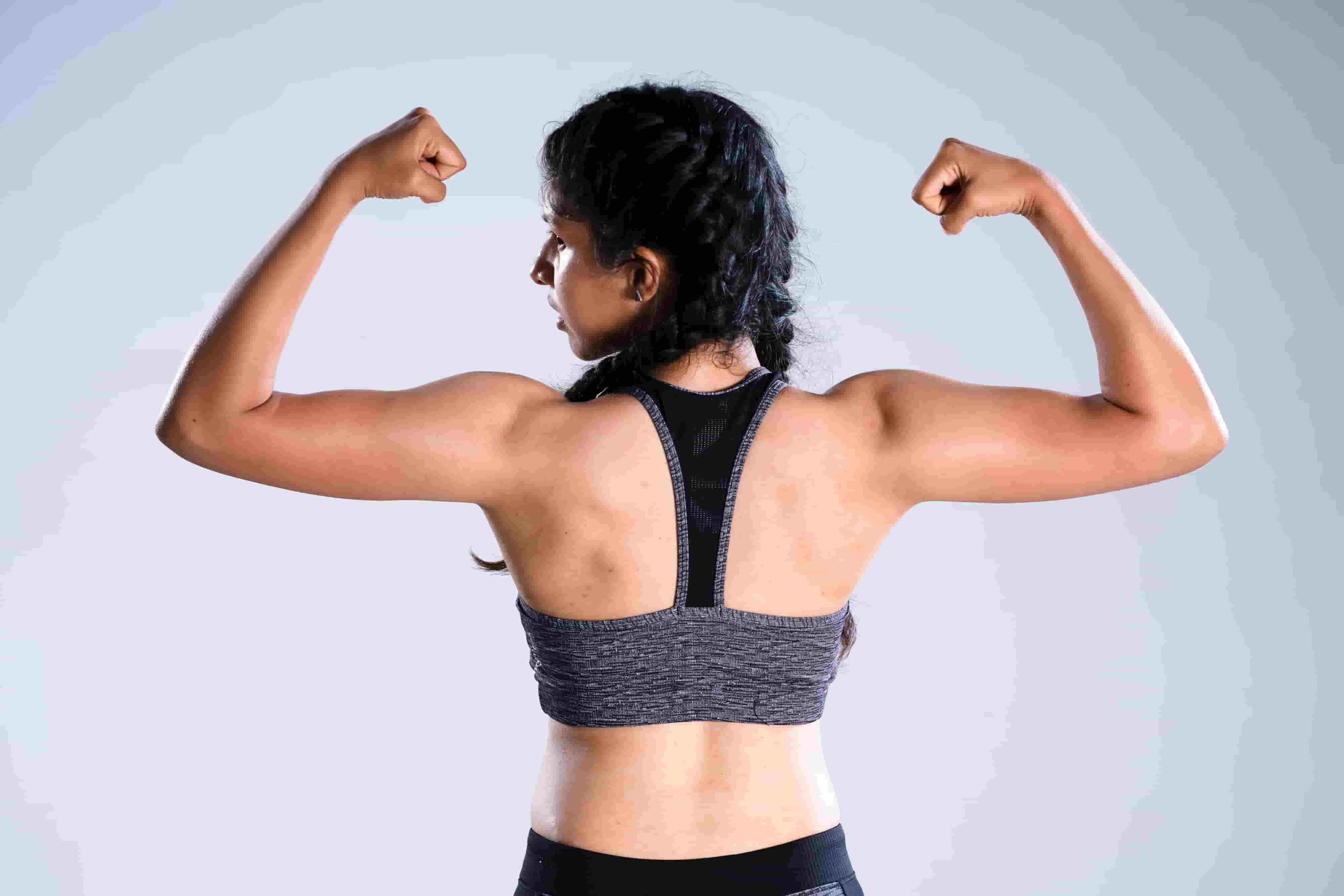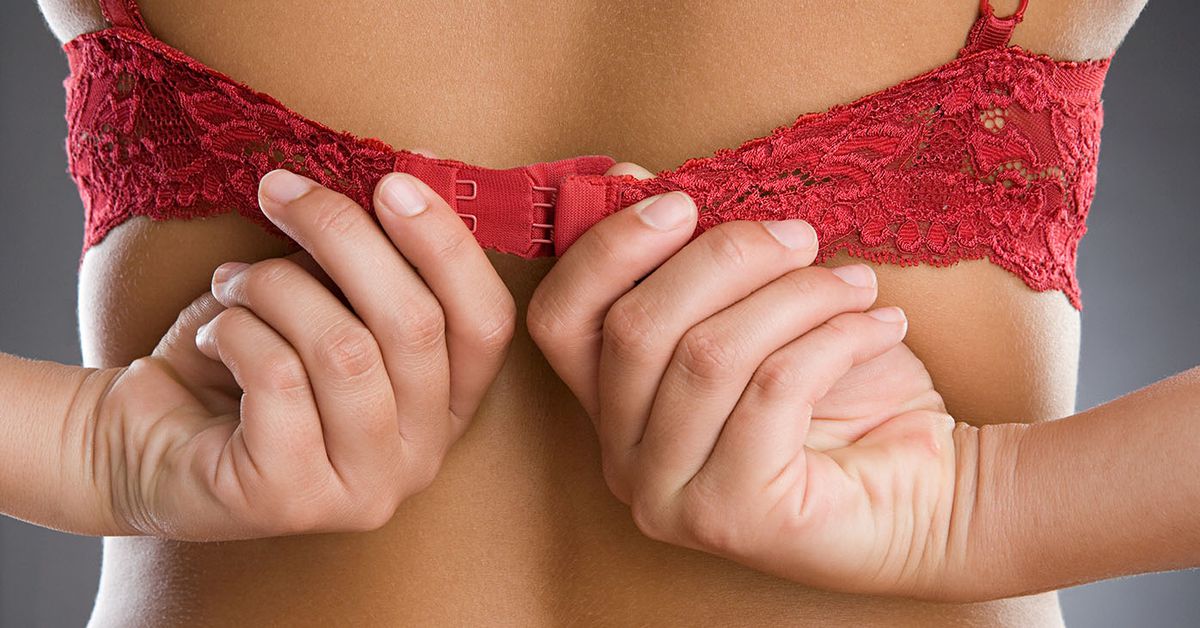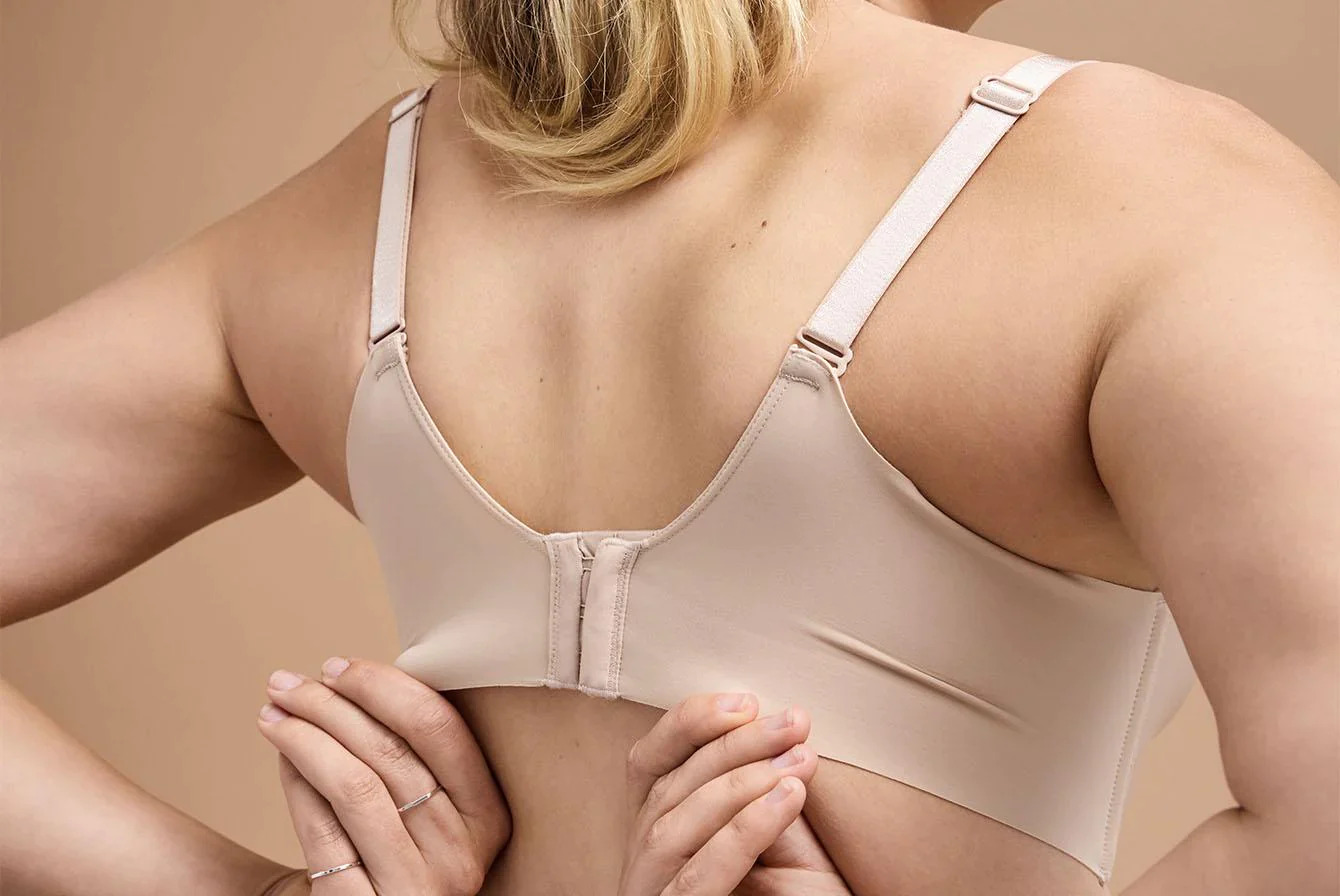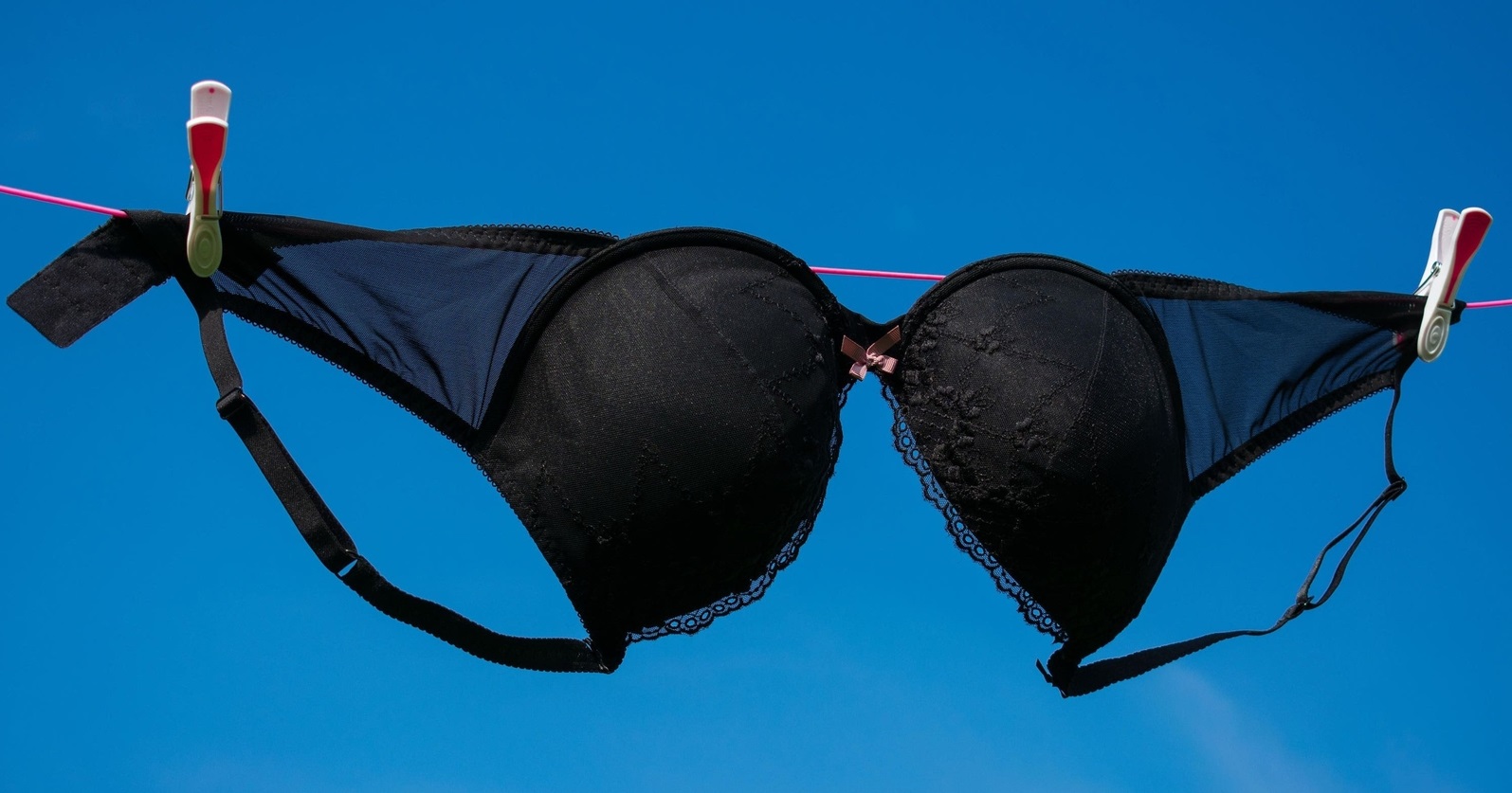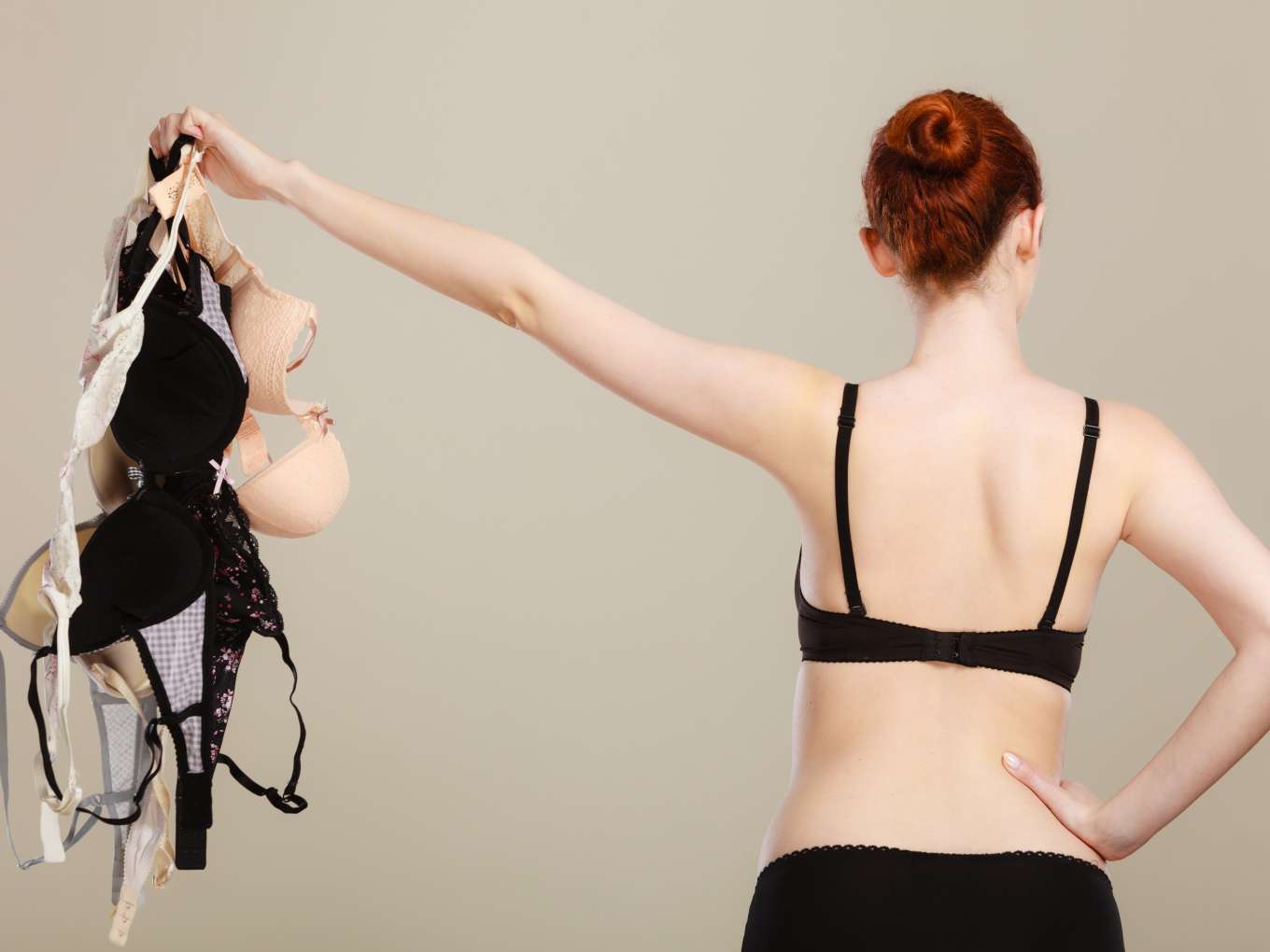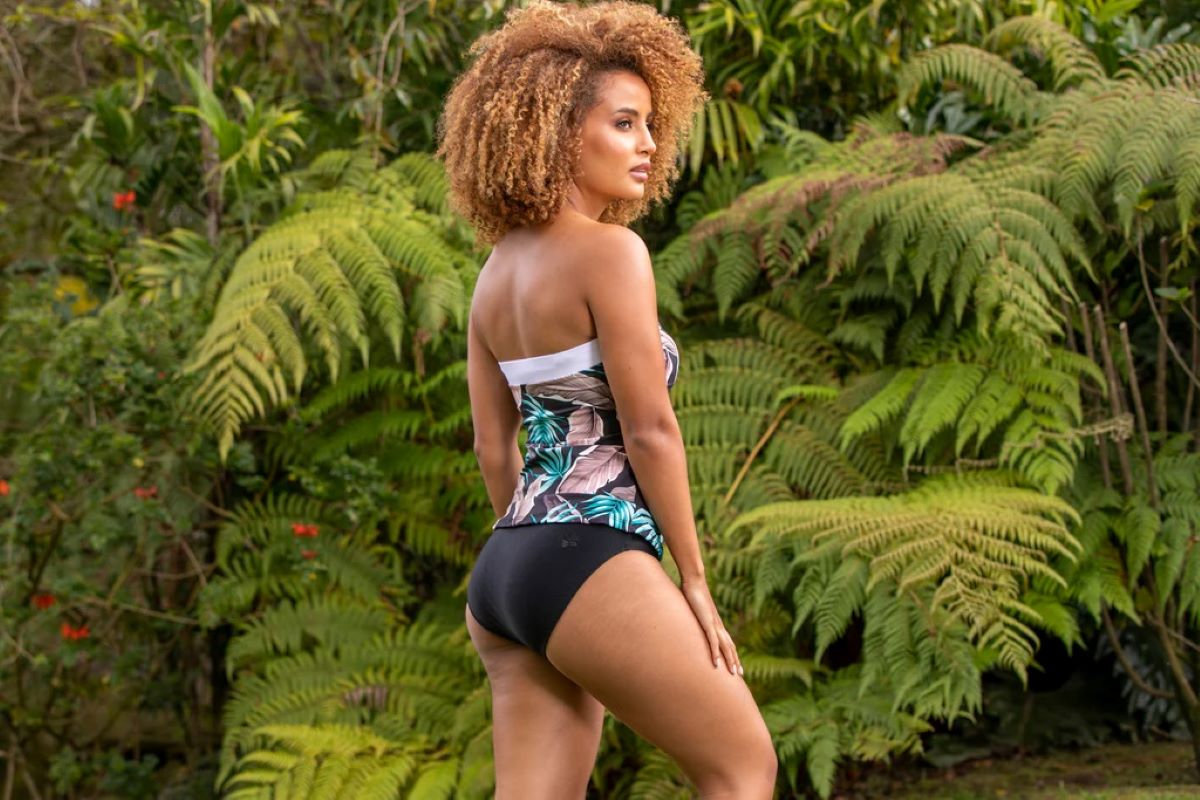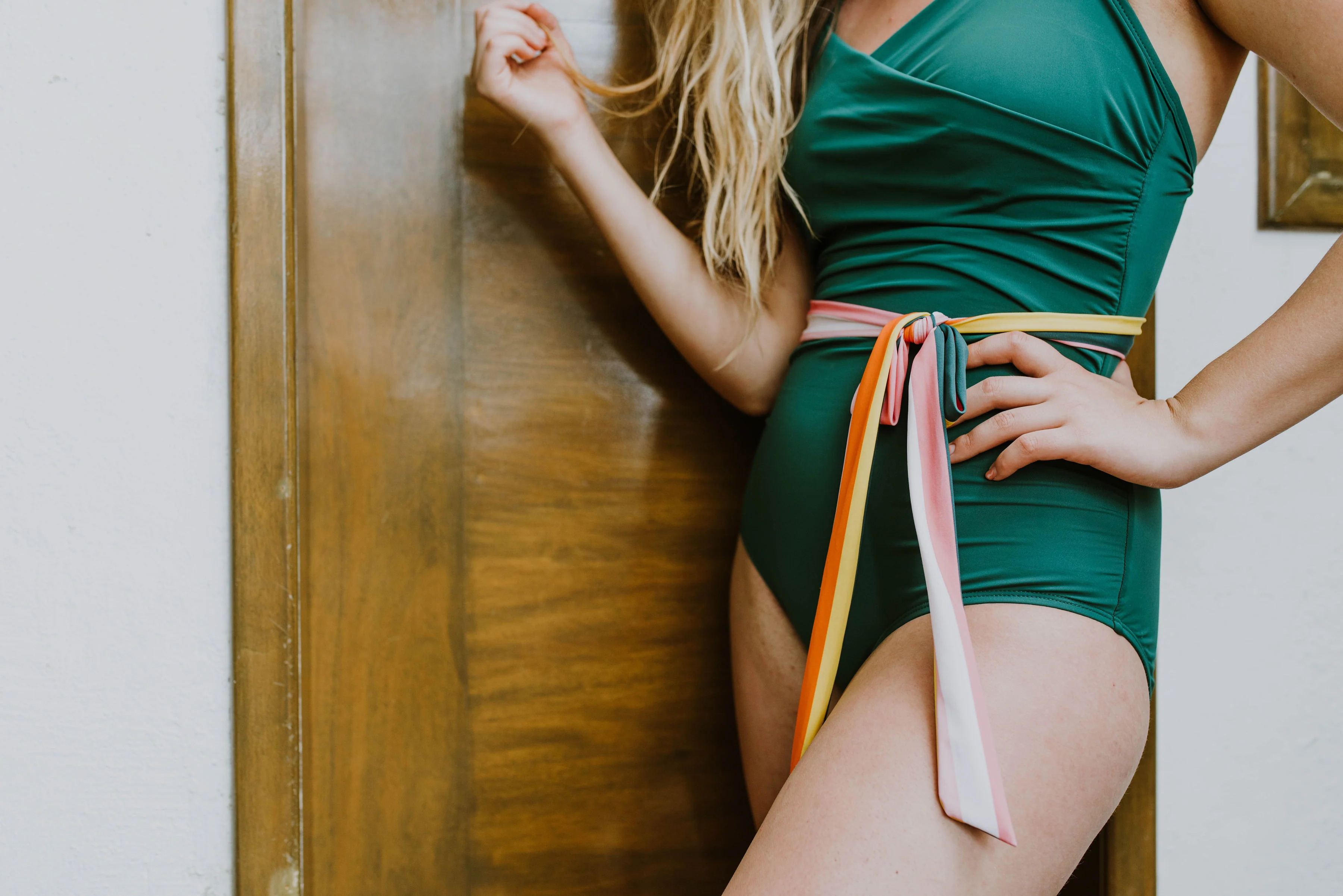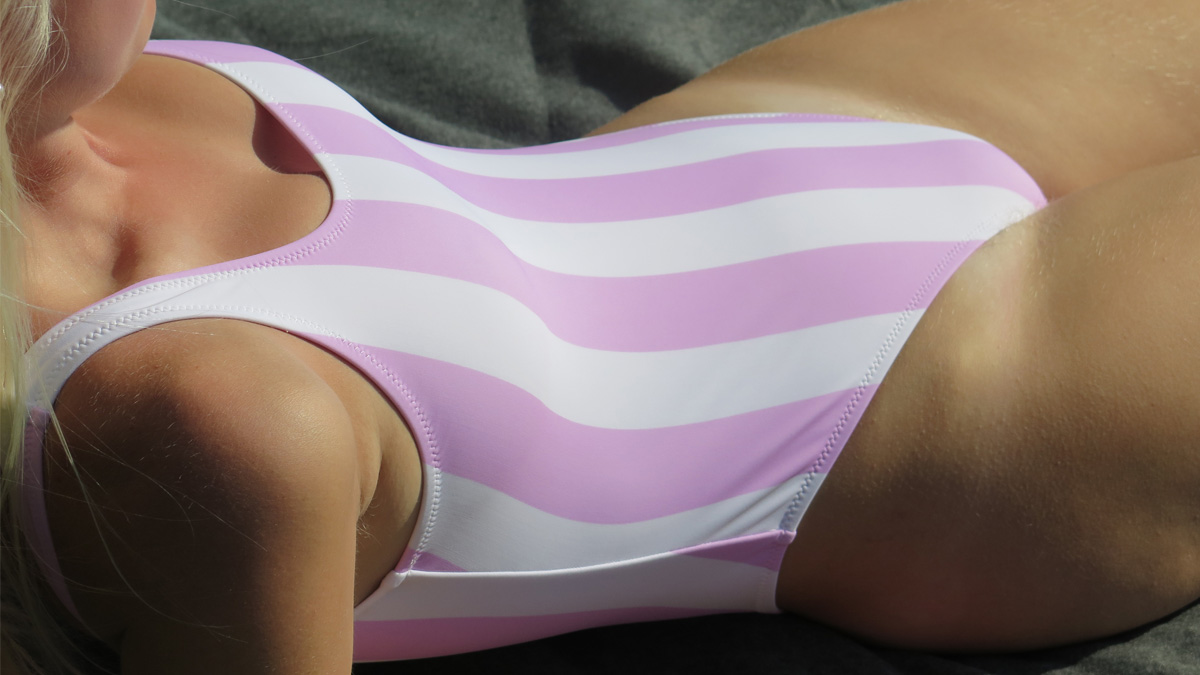Home>Women's Underwear>Bras>How Tight Should Bra Band Be


Bras
How Tight Should Bra Band Be
Modified: September 23, 2023
Discover the perfect fit for your bras with our guide on how tight the bra band should be. Find out the dos and don'ts to ensure ultimate comfort and support.
(Many of the links in this article redirect to a specific reviewed product. Your purchase of these products through affiliate links helps to generate commission for Under-tec.com, at no extra cost. Learn more)
Table of Contents
How Tight Should Bra Band Be
One of the key factors in finding the right bra fit is ensuring that the bra band is the correct size and fits comfortably. The bra band is the part of the bra that wraps around your torso and provides the majority of the support. It is essential for both comfort and optimal breast support that the bra band is neither too tight nor too loose.
When it comes to determining how tight the bra band should be, it’s important to strike a balance. If the bra band is too tight, it can cause discomfort, restrict movement, and leave red marks or indentations on your skin. On the other hand, if the bra band is too loose, it can ride up, fail to provide adequate support, and lead to back and shoulder pain.
When trying on a bra, start by fastening it on the loosest hook. This allows for adjustment as the bra stretches over time. The bra band should fit snugly around your ribcage, without digging into your skin or leaving indentations. You should be able to fit a finger underneath the bra band, but it should not be so loose that it easily slides up or down.
It’s important to note that different brands and styles may have slight variations in sizing and fit, so it’s always a good idea to try on multiple sizes and styles to find the best fit for you. Additionally, factors such as weight fluctuations and body changes over time can affect your bra band size, so it’s recommended to get professionally fitted every six months to a year.
Taking the time to find the right bra band fit is crucial for your comfort, support, and overall well-being. A well-fitting bra band not only enhances your figure but also boosts your confidence and allows you to go about your day without discomfort or distractions.
Introduction
A well-fitting bra is essential for every woman. It not only provides support and comfort but also enhances confidence and self-esteem. While many women focus on finding the perfect cup size, the importance of a properly fitting bra band can often be overlooked. The bra band is the foundation of support, providing the backbone for a comfortable fit. Knowing how tight the bra band should be is crucial to ensure the best fit and support for your unique shape.
But how do you determine the right level of tightness for your bra band? Is it meant to leave red marks or should it feel barely there? Finding the sweet spot can be a bit of a challenge, but with the right guidance, it’s entirely achievable.
In this article, we will delve into the world of bra bands and explore the ideal tightness that ensures both comfort and support. We’ll discuss the signs of a bra band that is too tight or too loose, provide tips for achieving the perfect fit, and highlight common mistakes to avoid. Whether you’re a seasoned bra-wearer or new to the world of bras, this article will equip you with the knowledge you need to ensure your bra band fits flawlessly.
So, if you’re ready to discover the secrets to a well-fitting bra band and unlock a new level of comfort and support, let’s dive in!
Finding the Right Bra Band Size
Before we can determine how tight the bra band should be, it’s crucial to find the right bra band size for your body. The bra band size is typically represented by a number, such as 32, 34, or 36, and corresponds to the measurement around your ribcage, just below the bust.
To find your correct bra band size, start by using a soft measuring tape to measure around your ribcage directly under your bust. Make sure the tape is snug but not too tight. Round the measurement to the nearest whole number.
If the measurement is an even number, that will likely be your true bra band size. However, if the measurement is an odd number, it’s generally recommended to add one inch to get your band size. For example, if your ribcage measurement is 29 inches, you would typically wear a 30 or 32 band.
Keep in mind that this is just a starting point, as bra sizing can vary between brands and styles. It’s always a good idea to try on a few different sizes to find the most comfortable and supportive fit for you. Remember, the goal is to find a bra band size that feels snug yet allows you to breathe comfortably.
You may also consider other factors when determining your bra band size. For example, if you prefer a looser fit or have a larger bust, you might opt for a slightly larger band size. On the other hand, if you desire more support or have a smaller bust, you might prefer a slightly smaller band size.
Ultimately, finding the right bra band size is a matter of personal preference and comfort. It’s essential to take the time to try on different sizes and styles to find the perfect fit that makes you feel confident and supported throughout the day.
Importance of Proper Bra Band Fit
A proper bra band fit is crucial for several reasons. Not only does it provide support and comfort, but it also affects the overall fit and appearance of your clothes. Here are a few key reasons why achieving the right bra band fit is essential:
- Support: The bra band is responsible for the majority of the support in a bra. When the band is properly fitted, it helps lift and support the breasts, reducing strain on the shoulders and back. A well-fitting bra band ensures that the weight of your breasts is distributed evenly, helping to prevent discomfort and pain.
- Comfort: Wearing a bra with an ill-fitting band can lead to discomfort and irritation. A band that is too tight can dig into your skin, leaving red marks and causing discomfort throughout the day. Conversely, a band that is too loose may result in constant readjustment and lack of proper support. A properly fitted bra band allows you to go about your day without feeling restricted or constantly aware of your bra.
- Shape and Appearance: The right bra band fit can enhance the shape and appearance of your breasts. When the band is snug and supportive, it helps create a flattering silhouette, minimizing any sagging or drooping. This can give your bust a more lifted and youthful look, enhancing your overall confidence and body image.
- Clothing Fit: A properly fitting bra band is essential for achieving a smooth and seamless look under clothing. If the band is too tight or too loose, it can create bulges, lines, or gaps that are visible through your clothing. By ensuring the right bra band fit, you can create a clean and polished look, allowing your clothes to drape smoothly over your body.
Overall, the importance of a proper bra band fit cannot be overstated. It affects both your comfort and the way you look and feel in your clothes. Taking the time to find the right bra band size and fit will result in improved support, enhanced comfort, and increased confidence throughout the day.
Signs of a Bra Band that is Too Tight
It’s important to be able to recognize the signs that your bra band may be too tight. Wearing a bra with a band that is too tight can be uncomfortable and even detrimental to your overall breast health. Here are some common signs that your bra band may be too tight:
- Indentations and Red Marks: If your bra band is leaving deep red marks or indentations on your skin, it’s a clear indication that it is too tight. The band should sit snugly against your ribcage without digging into your skin.
- Pain and Discomfort: A bra band that is too tight can cause significant discomfort and even pain. You may feel constant pressure, pinching, or squeezing around your torso. This can lead to discomfort throughout the day and may contribute to shoulder and back pain.
- Breast Spillage: When the band is too tight, it can cause your breasts to spill out from the sides or the top of the cups. This not only creates an unflattering appearance but also indicates that the band is not providing adequate support.
- Breathing Difficulties: If your bra band restricts your ability to take deep breaths or you feel like you’re constantly gasping for air, it’s a clear sign that it is too tight. Your bra band should be snug but not constrictive.
- Riding Up: A bra band that is too tight may ride up towards your shoulder blades. This not only compromises the fit and support but also creates an uncomfortable and unflattering look under your clothes.
If you are experiencing any of these signs, it’s important to re-evaluate your bra band size. A well-fitting bra band should provide support and comfort without causing any of the above issues. Remember, your bra band should feel snug but not overly tight, allowing you to move, breathe, and go about your day without any discomfort or pain.
Signs of a Bra Band that is Too Loose
Just as a bra band that is too tight can be problematic, a bra band that is too loose can also have negative consequences. It’s important to recognize the signs that your bra band may be too loose to ensure proper support and comfort. Here are some common signs that your bra band may be too loose:
- Lack of Support: If your bra band feels loose and fails to provide adequate support, it may be too big. A properly fitting bra band should offer a firm hold and lift your breasts, ensuring proper support throughout the day.
- Slipping Straps: When the band is too loose, your bra straps may constantly slip off your shoulders. This not only leads to discomfort but also compromises the support and fit of the bra.
- Riding Up: If your bra band tends to ride up your back, it’s a clear indication that it is too loose. The band should remain parallel to the floor and stay in place throughout the day.
- Gaps and Spillage: A bra band that is too loose may result in gaps between the band and your skin, especially at the sides and the back. Additionally, your breasts may not fully fill the cups, causing spillage and an unflattering appearance.
- Lack of Comfort: While a loose bra band may initially seem more comfortable, it can actually lead to discomfort over time. The lack of support and stability can result in constant readjustment and a feeling of insecurity in your bra.
If you are experiencing any of these signs, it’s important to consider resizing or adjusting your bra band. A well-fitting bra band should provide sufficient support, stay in place, and create a smooth and flattering silhouette under your clothes. Remember, your bra band should be snug but not overly tight or loose, allowing you to feel comfortable and confident throughout the day.
Tips for Achieving the Right Bra Band Fit
Now that you’re aware of the importance of a proper bra band fit and how to recognize if your band is too tight or too loose, let’s explore some useful tips to help you achieve the perfect fit:
- Get Professionally Fitted: Visiting a lingerie store or bra specialist for a professional fitting is one of the best ways to ensure you’re wearing the right bra band size. They can take accurate measurements and provide expert advice on the most suitable bra styles for your body.
- Measure Yourself Correctly: If you prefer to measure yourself at home, make sure you follow a reliable guide and use a soft measuring tape. Take measurements both under your bust for the band size and at the fullest part of your bust to determine your cup size.
- Try Different Sizes and Styles: Keep in mind that bra sizing can vary between brands and styles. Don’t be afraid to try on multiple sizes and styles to find the best fit for you. Remember that the right fit is a combination of band size, cup size, and bra style.
- Use the Hook-and-Eye Adjustments: When trying on a new bra, start by fastening it on the loosest hook. This allows for adjustments as the bra stretches over time. As the bra band begins to feel loose, you can gradually move to the tighter hooks to maintain a snug fit.
- Take Note of How It Feels: Pay attention to how the bra band feels on your body. It should be snug but not causing any discomfort, digging into your skin, or leaving red marks. You should be able to fit a finger underneath the band but not much more.
- Consider Your Body Changes: Keep in mind that factors such as weight fluctuations, pregnancy, and aging can affect your bra band size. Regularly reassess your size and fit to accommodate any changes in your body shape.
- Trust Your Comfort and Instincts: Ultimately, trust your own comfort and instincts when it comes to finding the right bra band fit. If something doesn’t feel right or if you’re not experiencing the desired support, try a different size or style until you find the perfect fit.
Remember, achieving the right bra band fit is a personal journey that may require some trial and error. Take the time to explore different options, seek professional guidance if needed, and prioritize your comfort and confidence in the process. When you find the perfect fit, you’ll experience the benefits of a well-fitting bra that supports you throughout the day.
Common Mistakes to Avoid
When it comes to finding the right bra band fit, there are some common mistakes that many women make. By being aware of these mistakes, you can ensure a better chance of finding a bra that fits you comfortably and provides the necessary support. Here are some common mistakes to avoid:
- Ignoring Professional Fittings: Many women rely on guesswork or outdated measurements when determining their bra size. Neglecting to seek a professional fitting can result in wearing the wrong size, leading to discomfort and lack of support.
- Tightening the Straps for Support: While it’s common to think that tightening the bra straps will provide more support, the majority of support should come from the band. Tightening the straps excessively can lead to shoulder pain and discomfort.
- Not Adjusting the Band Size: As the elastic in bra bands naturally stretches over time, it’s essential to adjust the band size accordingly. Many women continue to wear bras with stretched-out bands, resulting in a lack of support.
- Assuming One Size Fits All Brands and Styles: Different brands and styles of bras can fit differently, even if they’re labeled with the same size. Don’t assume that one size will fit perfectly across all brands and styles. Always try on different sizes and styles to find the best fit.
- Ignoring Body Changes: Our bodies change over time due to factors such as weight fluctuations, pregnancy, and aging. It’s important to reassess your bra size regularly to accommodate any changes and ensure a proper fit.
- Choosing the Wrong Band Size: Selecting a band size based on personal preference rather than accurate measurements can lead to a poor fit. It’s crucial to measure your ribcage correctly and select the appropriate band size for optimal comfort and support.
- Settling for Discomfort: Many women tolerate discomfort in their bras, assuming it’s just a normal part of wearing one. However, a well-fitting bra should offer both support and comfort. Don’t settle for discomfort; explore different sizes and styles until you find one that feels great.
Avoiding these common mistakes will greatly increase your chances of finding a bra band that fits you well and enhances your comfort and support. Remember, taking the time to find the right fit is worth the effort for your overall well-being and confidence.
Conclusion
Choosing the right bra band size and achieving the perfect fit is essential for both comfort and support. A well-fitted bra band not only enhances your figure but also boosts your confidence and allows you to go about your day without discomfort or distractions.
By understanding the signs of a bra band that is too tight or too loose, you can make informed decisions about finding the right fit for your body. Remember, your bra band should feel snug but not overly tight or loose, allowing you to move, breathe, and feel supported throughout the day.
Utilize the tips mentioned in this article, such as getting professionally fitted, trying different sizes and styles, and trusting your own comfort and instincts. Avoid common mistakes like ignoring professional fittings, not adjusting the band size over time, and settling for discomfort.
When you find a bra band that fits you properly, you’ll experience the difference in comfort, support, and overall well-being. Your clothes will fit better, your posture will improve, and you’ll feel more confident and comfortable in your own skin.
Remember, finding the right bra band fit is an ongoing process. Factors such as weight fluctuations and body changes over time can impact your bra size, so it’s recommended to reassess your fit every six months to a year.
Take the time and effort to find the right bra band fit, because you deserve to feel confident, comfortable, and supported every day. Invest in yourself, prioritize your well-being, and enjoy the benefits of a bra that fits flawlessly.
